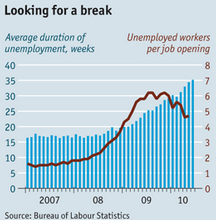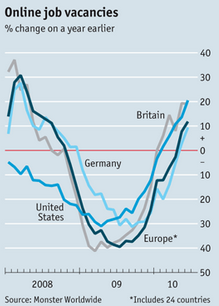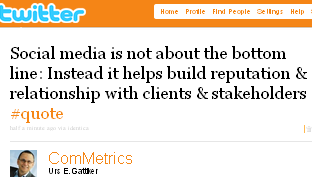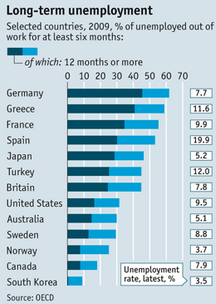We started a series entitled, Social Media DOs and DON’Ts, which provides checklists, tips and tricks to help you leverage your social media skills even better.
Today we focus on how to leverage social media in your hunt for a job or contract. Bosses search the web to find information about each of us; this post addresses how to ensure they find information that shows we know our stuff and would be a valuable addition to their team.
But first, sign up with your email to be among the first to get our next blog post.
- 1. Invisible candidate syndrome
Whatever method you use to look for a job or land another contract, if no one knows about your talents and skills, they cannot hire you.
 Sounds easy, but as we pointed out on 2008-12-17, people are increasingly self-employed, accounting for nearly a third of the US workforce – up more than 25 percent in the last few years.
Sounds easy, but as we pointed out on 2008-12-17, people are increasingly self-employed, accounting for nearly a third of the US workforce – up more than 25 percent in the last few years.
The financial crisis has not helped unemployment figures anywhere. As a result, more people have started supplementing their income with freelance work or started their own business, even in Europe, where self-employment statistics are lower. To make matters worse, there are several unemployed workers for every job opening (see right).
Tweaking your resume, searching job boards, and perfecting your cover letter has become the minimum work required. Even more is needed to increase visibility and secure that dream job or contract.
- 2. Social media DO’s and DON’Ts – follow your policy and be careful
Social media is a wonderful tool to increase your visibility. However, you must be careful about what you post to Twitter, Facebook, etc.
In fact, any pictures that landed on the Internet, such as snapshots of you attending the last Street Parade in Zurich, Carneval in Rio and so forth may not impress your future boss or potential client. Worse, they can still be found decades later.
Tip – Better safe than sorry. Follow the ComMetrics – Social media policy DOs and DON’Ts: 8 essentials for using social media smartly.
- 3. Set a timetable and start today
Having a digital footprint that impresses your boss requires that you start crawling before learning to walk. Creating an impressive digital footprint with content that shows your expertise, know-how and competitive edge takes time.
Don’t forget that qualifying for the 2012 Olympic Games in London takes so much training that unless you have already started, you certainly will not make it.
Budget at least six months to get yourself into the best start-position before the key interview happens.
Tip – With social media, things tend to take more time than you think. If you budget two hours a week, be prepared to double that time in order to produce the quality content required to have a positive impact.
Remember, the purpose is to land your dream job and/or that new contract/sale you want. Behave accordingly – focus, focus, focus.
- 4. Starting your own quality-content blog helps
Micro-blogging with Identi.ca, Naijapulse or Twitter, as well as using Facebook, LinkedIn, Xing or Viadeo is definitely important, but content related to your work and expertise (e.g., discussing industry-related matters) is still the most important component when building a personal brand people trust.
 Blogging allows you to create quality content that is relevant to your key audience in the industry or business you want to focus on.
Blogging allows you to create quality content that is relevant to your key audience in the industry or business you want to focus on.
The more interesting or relevant the content of your blog to your target audience, the more it will support your reputation and the better people will learn that you know your stuff. You may even become known as an expert of sorts.
As important, your blog content must be easily found and indexed by your reader’s favorite search engine, which also has the added benefit of attracting search traffic months later and making the blog’s archive a great resource.
The simple truth is that few people are renowned enough. Whenever somebody reads a great blog post, white paper or other content, the author(s) gain(s) a certain level of credibility with the reader.
This is merely a first, though very important, step to landing the job.
Tip – Before you start blogging, make sure you avoid the classic beginner’s mistakes: ComMetrics – Increasing blogging effectiveness: 6-step strategy
Learn from Briana Ford, who created a blog with a bio and great content that showed off her skills to recruiters and bosses alike BEFORE she entered the job market. That’s what I call a jump-start.
- 5. Join business-related social networks
Having a Twitter account that provides links to interesting content like @lgmassmedia and a social networking profile that puts your skills in the right spotlight, such as LinkedIn, always improves career prospects.
Ensuring that you tweet about your new blog content and listing it on various networks also helps. The key is to find the networks whose members include your target audience, whether potential employers or prospective clients.
Tip – In order to properly launch your career, your profile must be interesting (see Briana Ford’s on LinkedIn or Florian Richter’s on Xing).
- 6. Read, engage and discuss on social networks
Most people’s profiles on networks such as Xing , LinkedIn, Twitter and Facebook list memberships in plenty of groups. But those groups can thrive only if people read the shared content and engage. Most importantly, writing quality content that contributes to discussions is critical to building your reputation.
Group members that are never ‘seen’ become victims of the old adage, ‘out of sight, out of mind’.
If you’re wondering what LinkedIn has to do with a blog, take note. Unlike your blog content, most information you post to a group you help moderate on Xing or LinkedIn is difficult for non-members to find. Nevertheless, you can link to content on your blog, as long as it is relevant to the group’s discussion.

Tip – Check out ComMetrics – Building a social networking reputation: 4 golden rules or how Joyce Treptow shares on Social Media Monitoring.
- 7. Best face forward – appearances matter online too
Attributes like trustworthiness, ambition and intelligence are generally recommended profile information, but it is all in the eye of the beholder.
Profiles without pictures just kind of fade into the background, but an engaging profile picture may work for one industry, but not for another line of business or country.
Tip – Just because a picture – helps you get more followers does not mean that the ones following are those you want and need to get another contract and/or job. Nevertheless, it does help to have as many blog readers or Twitter followers as you can get.
- 8. Leverage your time
Using social media is time-consuming and like a garden, it requires regular attention, pruning and so forth. Tweeting one week and being silent for a couple thereafter does not help building relationships.
Out of sight is out of mind, so regular posts with links to interesting material are key. Staying focused on relevant content for your readers also helps keep your audience happy and save time.
Tip – 3 golden rules for social media marketing
- 8. What is your social media baseline?
Once you have established your blog, social network profiles and so forth it is time to take an initial baseline measure. Then you can start benchmarking and tracking your progress with My.ComMetrics.com or other software.
Unique visitor traffic can be a navel-gazing kind of metric, because unless those visitors are current clients or can help you clinch a sale, high traffic may not help your company’s bottom line or land you the job you need to pay the bills.
Tip – Make sure that your metrics link to your objectives (i.e. getting a job and/or new contract). Unless unique pageviews come from those who can help you reach your objective, the number has no significance.
Bottom line
Following these essentials will help establish your digital footprint with content that is relevant to your target audience(s) and helps build your personal reputation.
Have an opinion on this? Did we forget a social media DO or DON’T that you know about? Please share in the comments; I love to hear what works for you!
Article source: ComMetrics – Social media DOs and DON’Ts: 8 job search tips

Pingback: Urs E. Gattiker
Pingback: MyComMetrics
Pingback: Askoli -rise with us
Pingback: Jeff Domansky
Pingback: Nabor Garrido Valle
Pingback: Jor-G. C. ♠
Pingback: CyTRAP
Pingback: Urs E. Gattiker
Pingback: trendwork
Pingback: Urs E. Gattiker
Pingback: CyTRAP
Pingback: Alexela Technologies
Pingback: Shane Skillen
Pingback: Mark Davids
Pingback: Sharon Jones
Pingback: Alex Hall
Pingback: Alex Hall